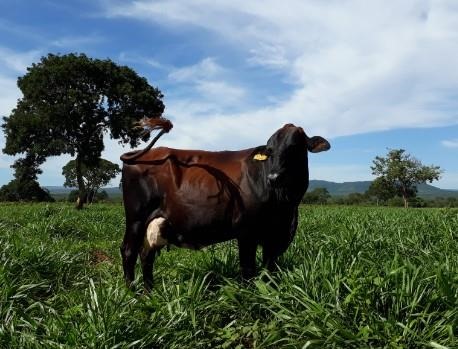Dr. Tyler Holck said the swine industry has been improving how it prevents disease, identifies infections that slip through, and shares information.
He sees potential to do even better with widespread adoption of best practices and is helping lead efforts to define and standardize those practices.
The U.S. Swine Health Improvement Plan is two years into its four-year, U.S. Department of Agriculture–funded pilot phase, during which representatives from industry, government, and academia are working to develop standards intended to increase barriers against pathogens, track animal movements, and quickly detect infections. If the pilot program proves successful by fall 2024, it could transition into a USDA-run program and potentially provide trade benefits for participants.

r. Holck, senior project coordinator for US SHIP and lead public health veterinarian at Iowa State University Veterinary Diagnostic and Production Animal Medicine, said the work is producing a national disease response playbook that would be administered by participating state governments. The vision is for the plan to enhance collaboration among producers, packers, veterinarians, and state and federal officials, he said.
Pork industry representatives, state veterinarians, and USDA officials will meet this September in suburban Minneapolis for the second US SHIP House of Delegates meeting. Among the scheduled events, the agenda includes sessions for state agencies to talk about logistics of the program, education on the results of recent studies and other developments that could influence industry practices, and a business meeting to consider adopting proposed standards and resolutions.
Creating the playbook
The US SHIP is modeled on the National Poultry Improvement Plan, a state and federal government testing and certification program that was started in the 1930s with goals to reduce poultry deaths from disease, improve poultry breeding, and improve poultry performance. USDA information indicates most U.S. trading partners require NPIP participation from exporters of poultry and poultry products.
During the pilot program, the primary goal for US SHIP is creation of a certification program that swine farms and slaughter facilities are free of African swine fever and classical swine fever and they have added biosecurity measures that reduce their risk of disease introduction, similar to an avian influenza certification program through the NPIP. ASF and CSF are highly contagious viral diseases that are deadly to swine.
CSF, also known as hog cholera, was eradicated in 1978 in the U.S. but it remains endemic in parts of Central and South America, Europe, Asia, and Africa, according to USDA and World Organisation for Animal Health (OIE) information. African swine fever has not spread to the U.S., but its recent spread into Asia has devastated swine herds, and the virus spread to Haiti and the Dominican Republic in 2021.
Dr. Dustin Oedekoven, chief veterinarian for the National Pork Board, hopes to see increased standardization of disease prevention and control, which helps provide confidence that producers can move swine across state lines safely. The National Pork Board and National Pork Producers Council not only support the US SHIP but also have made its development a priority toward preparing for African swine fever’s potential introduction in the U.S.
“I think it’s a unique tool that the pork industry has an opportunity to participate in—to establish those standards for biosecurity, traceability, and surveillance,” he said.
Dr. Holck said the US SHIP has already secured participation from 28 states, including the 15 states that together raise more than 99% of nation’s pigs. He hopes more will enroll.
“By participating even in this pilot, they’re saying, ‘We see the need to have a more uniform approach to animal health and, in this case, swine with ASF or CSF,’” he said.
State agencies participating in the US SHIP pilot program have begun enrolling pork producers, who are taking biosecurity surveys to assess how closely their practices align with program standards and will work to meet those standards, Dr. Oedekoven said.
He also noted that US SHIP officials are working to evaluate methods of tracing the movements of animals in the U.S. One of those tools is a software platform, AgView, that was funded by the Pork Checkoff and can be used to share animal contact tracing data with governmental animal health officials on day one of an outbreak of foreign animal disease.
Applying expertise
The program’s working groups are trying to address vulnerabilities that have been linked with past disease outbreaks.
For example, Dr. Jordan Gebhardt, assistant professor of swine production at Kansas State University College of Veterinary Medicine, is helping develop the US SHIP playbook for biosecurity of swine feed. He is one of four K-State faculty members who are leading a US SHIP working group that is striving to create standards that would be useful for large-scale producers and small local ones alike.
USDA officials concluded in 2015 that contaminated feed and feed containers most likely carried viable porcine epidemic diarrhea virus in spring 2013 into the U.S and started the outbreaks that killed millions of pigs. The woven shipping bags were also implicated in outbreaks of a swine deltacoronavirus that caused similar clinical signs but far fewer deaths.
Study results published in recent years suggest other viruses, including the ASF virus, also can remain viable through overseas shipping in certain feed ingredients.
Dr. Gebhardt said the next steps involve coming together as an industry and deciding what standards swine producers need to meet and how to achieve them. And the US SHIP House of Delegates agreed in fall 2021 that the industry needs more information on feed biosecurity.
Click here to see more...